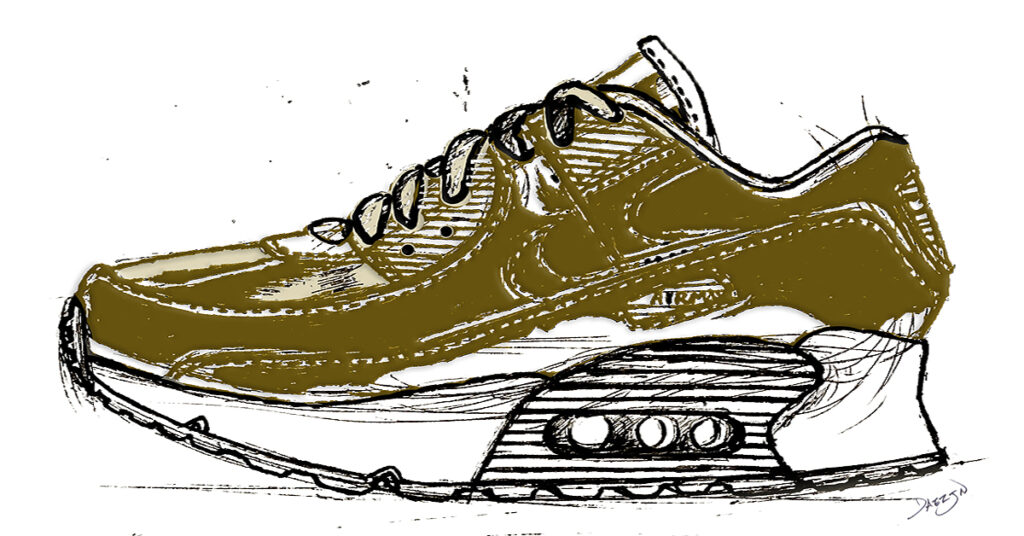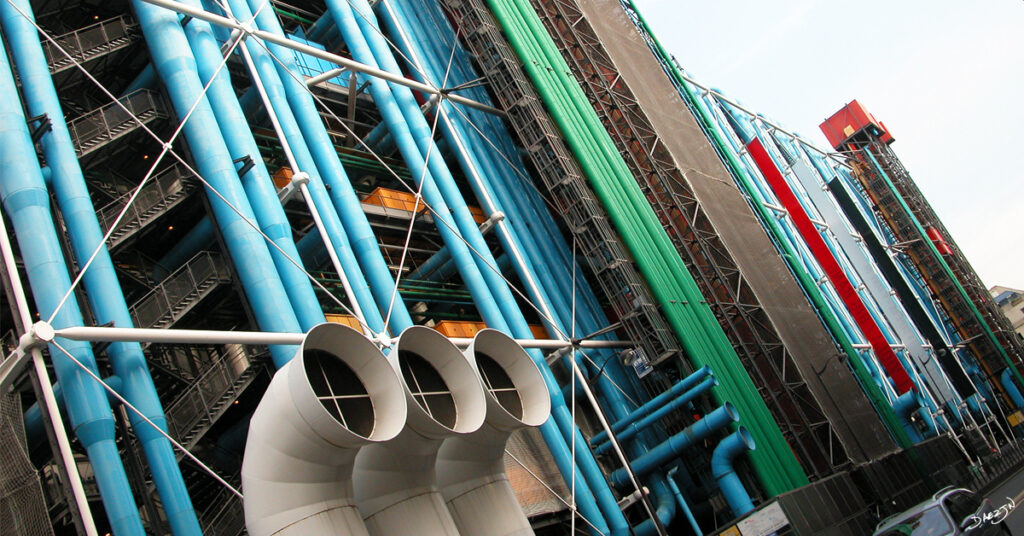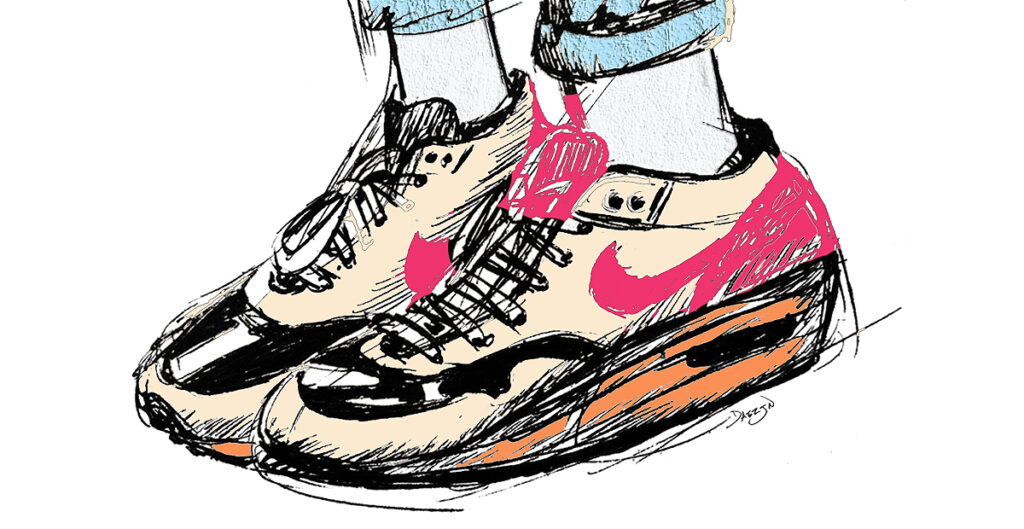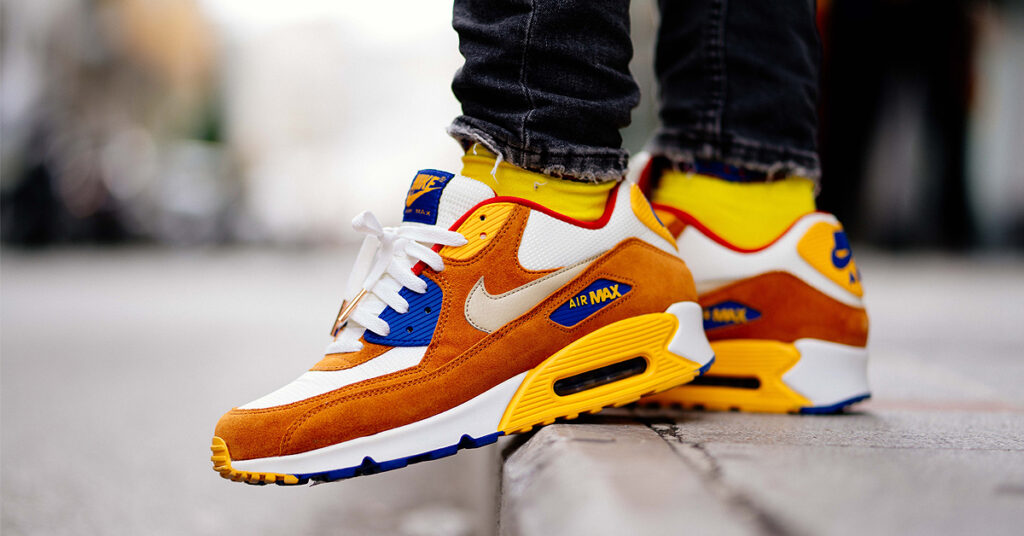Physical Address
304 North Cardinal St.
Dorchester Center, MA 02124
Physical Address
304 North Cardinal St.
Dorchester Center, MA 02124

One cannot help but notice as a sneakerhead surfing the internet. Why is Nike Air Max so expensive? After all, from a practical perspective, they are nice-looking running shoes and comfortable footwear for daily use.
But its timeless design offers an incredibly versatile look that any savvy fashion lover can appreciate and can easily coordinate with any outfit for men or women. Whether paired with a dress, pants or, dressed up for special occasions or down for casual activities.
Arguably, the Nike Air Max is one of the most popular shoes for any sneakerhead, and it is no wonder that it has earned a massive following across the globe. They are seen splashed on clever advertisements, social media, and sneaker blogs like Sneaker Freaker, as well as being favored by celebrities and their friends such as Jennifer Lopez and Drake and by sports enthusiasts, influencers, and fashionistas.
One key factor for its high prices is driven by popularity. Starting with the base model of the classic Nike Air Max 90 at a price point of USD 130 a pair, leading up to more premium Air Max models priced at over USD 200 a pair. The Nike Air Max collective include:
Not forgetting special collaborations and limited edition upper colorways that consist of cool plays with interesting hue combinations and mixed materials such as quality leather, synthetics and sometimes mixed with more unusual stuff. One such example is my all time favorite, Nike Air Max 90 in metallic gold which I am unfortunately not one of the lucky few that have my hands on a pair- I’m still hunting one in my size.

There are a number of reasons that justify the inflated value of the Air Max. Typical factors to consider that can effect the final retail price include:
But retail markup is also driven by trends and the typical notion of ‘supply and demand’ seems to be main influence. Air Max might be expensive just because a lot of people want them. Here, we’ll break it down and look into all the reasons in detail.

Flashing back into the past, Nike debuted its very first Nike Air Max 1 on the 26th March, 1987. It was the first sneaker that was launched by Nike with the Air Max Technology visibly noticeable on the outside. The design of the first generation captured a moment in time that encapsulated the late 80s era.
Since then, the shoe has been sold in many colourway upper iterations that even its shoe box has been given special treatment. Proving that Nike Air Max will continue to have an ever growing compendium perhaps for another 35 years.
With each sneaker that Nike produces, the company makes a little profit as a manufacturer and distributor. While the shoes themselves may only cost Nike a few dollars to manufacture, the company must also consider the shipping costs and tariffs to various ports and storage for their stock across the globe.
There is also their huge marketing budgets to consider for television ads, billboards and celebrity/ athlete sponsorships, and of course the all important manufacturing and management of each pair from sketch to design, colourway and material decisions to sourcing, production, etc. Otherwise, we wouldn’t be spoiled for choice with the broad range of amazing designs and spectrums on offer in the market today.
These factors need to be decided behind the scenes before the product reaches the sales floor infront of our eyes- either in a big box outlet, department store, specialty sneaker shop or on a retail website. So when a company decides on a price for a product, they have to factor in all of these overheads, which costumers may not actually notice in the final product.
The retail price of the Air Max is much more higher than the manufacturing cost price because the necessary steps and labor involved in getting the shoe into the hands of the consumer creates what the industry calls a “markup.” This markup, or the amount added to the cost price of goods to cover overhead and profit, must be baked into the total cost for companies like Nike to make money.
When you buy a new house or lease a new car, you’ll often factor in things like maintenance costs, parts prices or the miles per gallon. You know that the payment for the actual vehicle is not the total cost of owning the car. You’ll have to budget for insurance, mechanical wear and tear, and gas at a minimum. Nike does the same when they create a product. They ensure that the cost of goods (COGs) covers not only the materials and labor to make their products but also advertising, trademark, legal services, customer service, etc.
If Nike sells Air Max directly on its website or stores, the brand will get a higher margin per pair. Nike may also sell their footwear to some approved retailers like:
These stores or distributors often negotiate a contract for bulk orders, licensing, and exclusivity rights. The partnerships may lead to a slight decrease in profit margins for Nike compared to their own internal sales networks but the large volumes generated (particularly with big box distributors) may justify higher revenues. When these details are factored in, you can understand why Nikes are so expensive.

The Air Max line, was designed by the legendary pioneer Shoe Designer, Tinker Hatfield. He was inspired by Paris’s famous Georges Pompidou Centre which was designed with the intention of turning its external links, functional and structural elements (that are normally concealed) to be displayed openly as part of its architectural aesthetics.
Hatfield adopted this concept to the existing Air Technology (which was originally introduced to the Nike Tailwind by NASA engineer Frank Rudy as an alternative to EVA soles using hidden gas-filled urethane pouches). Nike Air technology is intended to provide better cushioning while reducing weight when running- two important factors constantly scrutinized today in running sneaker design and performance technology.
By introducing a visible Air unit in all pairs at the heel, Nike created the Nike Air Max 1. Hatfield’s controversial approach of introducing a larger Air unit into the back of the midsole was revolutionary. Causing a sensation from the late 80s onwards. In turn, exposing the Air units in the midsole, it gave the opportunity for the units to perform better with the added room allowing for improved expansion and contraction, magnifying the potential of the technology. This placed Nike in the centre stage of the sneaker world.
The Air Max and Air Trainer were the only styles that displayed visible Air pockets as part of its design feature. Something that other Nike sneakers (like the Air Jordan 1 and Air Force 1) did not offer- both shoes have concealed their air pockets in the midsoles. The exposed Air pockets led to fierce competition in the market against other brands of the time like Reebok, LA Gear, Adidas, etc.

Over the years, the sneaker had transitioned from the realm of performance running shoes to a statement shoe or status symbol as a must-have amongst social circles. A shoe that is now not only worn by athletes and sports lovers but also by those that appreciate comfortable shoes, have a good head on their shoulders for style and an appreciation for timeless uppers.
It’s become a sneaker that can be as valuable as a watch and be able to drive more comments on an Instagram post than you and I could on our own social media accounts. A sign that the shoe has become more than just some old running shoe from 1987.
Air Max is now considered an iconic fashion shoe. The popularity of Air Max sneakers and the high demand for them means its value will only go up as the shoes have proven to be a collectible item. Limited availability and high-profile collaborations now make up for a magical formula that fashion brands and sneaker companies have now taken advantage of to create and trade special releases.
Increased desirability has also led Nike to distribute refined special releases of the original shoe (touched up with newer details) and also launch updated varying colorways that are trending. Special edition shoes are often the star of Instagram snaps and paparazzi photos. You can see these special styles worn by top celebrities while grabbing coffee or heading to a social event. It is considered a “hype” model to sneaker fans, primarily because it is a limited edition.
Fans are willing to line up outside Nike stores worldwide (even camping out in advance) when a new release is announced. For example, the Air Max 1 Wave, a collaboration between Nike and Dutch streetwear brand Patta summoned hundreds of sneaker freaks willing to wait in line for up to 24 hours.
Sneakerheads and fashion bloggers rush to share their first encounters on social media with their new purchases. Documenting their unboxing experiences and reviewing the unique qualities of the new shoes before anyone else. Many fashion-forward A-listers wear the Air Maxes (matched with their latest outfits, denim, dresses, or favorite sports jerseys) meticulously styled, cropped, captioned, and photographed for all to see in posts published for the world on their social media platforms. The versatility, fashion notoriety, and overall increase in demand allow Nike to charge a higher retail price.

So what drives the retail markup for Nike Air Max shoes? The real answer is demand (thanks to the influence of technology).
The Air pocket technology in Nike shoes is unique, iconic, and beneficial. But Nike, like all manufacturers, calculate not only what it costs to create, ship, and market their product but estimates the suggested retail price based on what they think people are willing to pay for sneakers. If you’re willing to shell out a few hundred dollars for the latest kicks that Rihanna is wearing, Nike is happy to meet you at the mark.